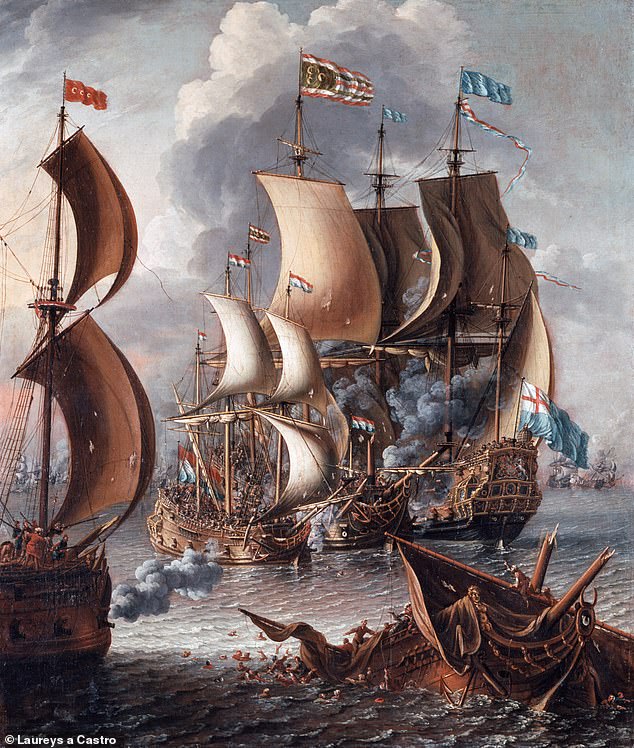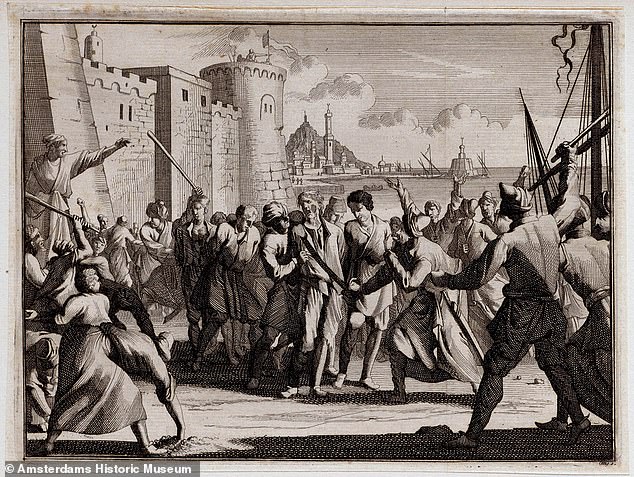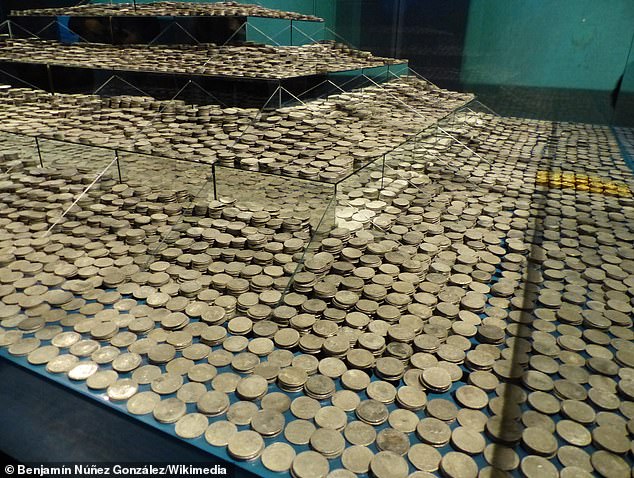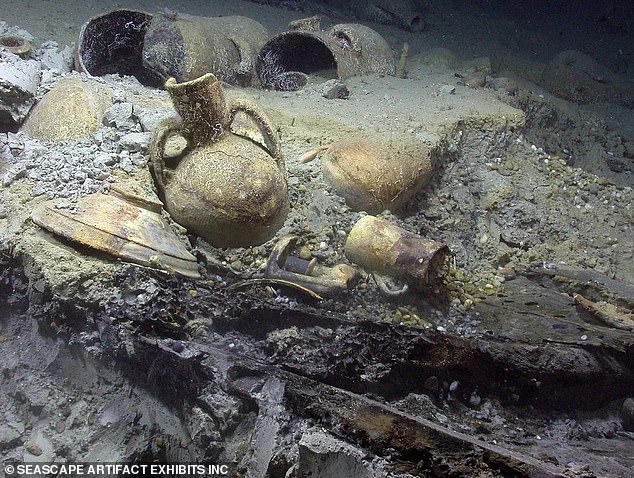After nearly twenty years of secrecy, a group of treasure hunters is finally coming clean about a centuries-old pirate shipwreck they discovered 2,700 feet below the surface in the Mediterranean.
Florida-based Odyssey Marine Exploration says it found a roughly 45-foot-long ship in 2005 that was once manned by Barbary corsairs, Muslim pirates and privateers who operated off the coast of North Africa and often attacked European ships.
A detailed analysis of the ship’s wooden hull, which could reveal when it was built and how long it was in service, has yet to be carried out.
However, pottery and glass found on board suggest it may have sunk around 1760, according to Sean Kingsley, editor-in-chief of Wreckwatch magazine, an outlet that examines shipwrecks.
“Most of the pottery has exact parallels with 18th-century pottery excavated during rescue work at Martyrs’ Square in Algiers,” Kingsley said. Newsweek Magazine‘The Ottoman bowls from the wreck ceased to be manufactured in Turkey around 1755. The most precise dating comes from glass bottles that were manufactured at the latest between 1740 and 1760. The ship therefore cannot be dated later than 1760.’
Pottery and other artifacts found in the wreck of a pirate ship in Algiers dating back to the mid-18th century
The wreck found in international waters between Morocco and Spain was linked to Algiers, the current capital of Algeria.
But several centuries ago, the city was known as the center of piracy on the Barbary Coast.
“The threat of the corsairs of Algiers was a daily terror for the West,” he said.
“The shipwreck found in deep water is a beautiful echo of one of the great maritime horrors of the western Mediterranean,” said Greg Stemm, director of Seascape Artifact Exhibits Inc. and former president of Odyssey.
From the 16th century until 1830, when the French invaded the country, Algiers was a tributary state of the Ottoman Empire. It also attracted Muslim refugees from Spain and Christian converts to Islam who dreamed of getting rich through piracy.

Greg Stemm, director of Seascape Artifact Exhibits Inc. and former president of Odyssey
“Less famous than the pirates of the Caribbean, the privateering capital of Algiers took up piracy much earlier and it became a much bigger business,” Kingsley said. “From 1525 to 1830, an entire city of 60,000 ‘rogues and renegades’ lived by the sword.”
He added that Barbary pirates were raiding as far south as England.
“They didn’t just take your wealth, they enslaved anyone they caught and held a huge ransom for it. It was an atrocity of everyday life that Western traders had to play along with,” Kingsley said.
This particular wreck was discovered by Odyssey by accident. Their main objective was to unearth a Royal Navy ship, the 80-gun HMS Sussex, which was lost in a storm in 1694.
Odyssey has had its share of controversies in the past for taking valuable treasures from shipwrecks it discovered in the past.
In 2007 he discovered the remains of the 1804 shipwreck of the Spanish warship Nuestra Señora de las Mercedes.
Odyssey initially claimed $600 million in loot by extracting 17 tons of gold and silver coins from the ship, but after a protracted court battle, the Spanish government won the right to recover the treasure.
The coins are now on display at the National Museum of Underwater Archaeology in Cartagena.

A 1681 painting by the Flemish painter Laureys a Castro depicting a naval battle between European ships and Barbary corsairs.

An illustration shows enslaved Christians captured by corsairs arriving at the port of Algiers to be ransomed.

Pictured: The coins Odyssey found aboard the 1804 shipwreck of the Nuestra Señora de las Mercedes, a Spanish warship. These coins are on display in a Spanish museum after a long court battle between Odyssey and the Spanish government over who had the rightful right.
The Odyssey’s 250-foot-long research vessel served as a base for studying the wreck of the privateer Algiers, and the team used a remotely operated vehicle equipped with archaeological tools to comb through the debris.
Kingsley explained that this discovery is significant because it marks the first shipwreck containing artifacts (pottery, glassware and heavy weaponry) that can be directly linked to Algiers.
“The wrecked privateer was heavily armed with muskets, four large cannons and ten swivel guns. When the captain got into trouble, these anti-personnel weapons could be quickly rigged to attack crews in the rigging and on the decks,” Kingsley said.
Only a third of the hull has survived above the seabed, mainly due to damage caused by Mediterranean shipworms (a type of saltwater clam).
The site has not yet been fully excavated, but Odyssey believes the entire length of the ship down to the keel is intact beneath the sand.
The pirate ship is believed to have been travelling to Spain on a mission to raid ships and take slaves for ransom at the time of its sinking.
“The little boat almost certainly succumbed to a storm that came out of nowhere,” Kingsley said.
‘The corsair, bold and brave, was fighting beyond his means in relentless seas.’

